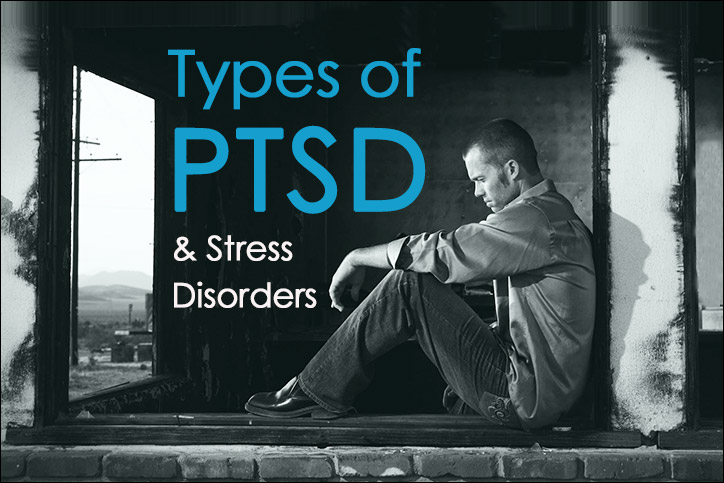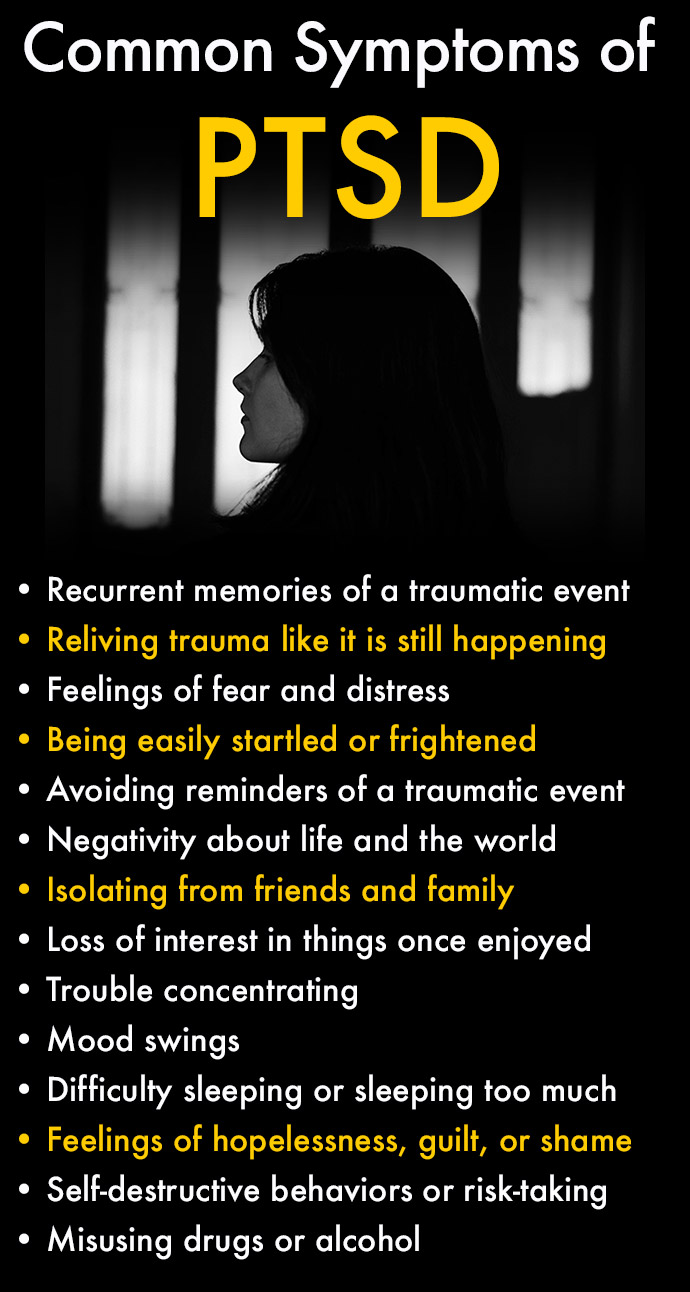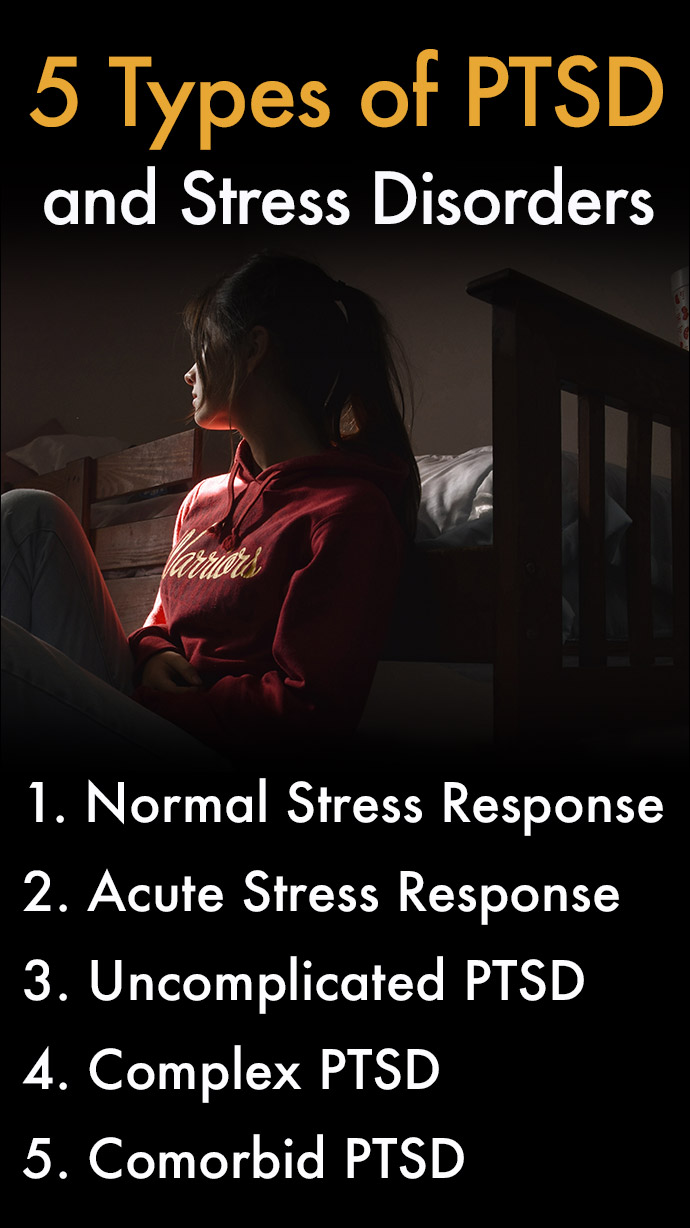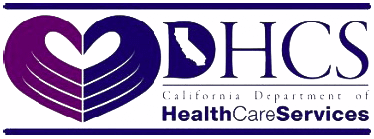Table of Contents
Most people are familiar with Post-Traumatic Stress Disorder, but many are unaware there are 5 types of PTSD and each one can have slightly different symptoms or treatment methods.
An estimated 12 million adults in the U.S. struggle with post-traumatic stress disorder in a given year, according to the Department of Veterans Affairs.
While it’s common to associate this mental health condition with military men and women returning home from combat, the truth is that anyone, at any age, can suffer from the effects of a traumatic experience.
It’s important to understand that the 5 types of PTSD and stress disorders are treatable conditions.
What is PTSD?
PTSD is a psychiatric mental health condition that has several different subtypes based on a person’s symptoms.
Every individual experiences and reacts to trauma in a different way. While one person might be able to process a traumatic experience in a healthy and normal way, another person might not be able to quickly shake the troubling effects of a disturbing event.
In a similar way, stress is a normal human response and there’s a difference between reacting vs responding to a stressful situation. Learning how to respond in a positive way instead of negatively reacting can help reduce some of the mental pressure.
Many people who battle PTSD or a stress disorder diagnosis feel unnecessary shame or guilt that they are having difficulty recovering from a traumatic experience. This can be especially true when someone else who lived through the same event is not affected.
There are also those who experience trauma but may not realize they are exhibiting the symptoms of PTSD.
Some people confuse adjustment disorder symptoms with PTSD because they are similar, but the duration and timing of the symptoms make them different conditions.
Causes of PTSD
Many types of PTSD symptoms appear after a person experiences a real or perceived threat to their own life or wellbeing.
Even witnessing trauma that happens to a loved one can bring on symptoms of the condition. These types of traumatic experiences often come in varying degrees and forms.
One of the reasons that PTSD is associated with soldiers is because of the incredibly horrific events they are exposed to during war and combat. It’s meaningful to note that innocent people caught in the crossfire of these military conflicts tend to suffer the mental anguish of PTSD as well.
Violence and abuse, such as sexual assault, verbal or physical abuse in the home, or during a random attack can cause significant symptoms of PTSD and impair a person’s ability to carry on normally in their daily life.
Natural disasters that displace families and individuals can lead to some types of PTSD, as well as tragedies like losing a loved one, or being involved in, or simply witnessing a violent accident.
Unfortunately, many people battling different types of PTSD might not realize that his or her problems stem from untreated trauma in the past, or from recent events.
This is why recognizing the symptoms of PTSD can help people seek the help they need to recover.
Common PTSD Symptoms
Because everyone person’s response to trauma is different, the symptoms of PTSD in some people can appear within about a month of experiencing a traumatic event. In others, however, the symptoms of PTSD and past trauma may not appear for years.
The most common PTSD symptoms are generally grouped into categories that include intrusive memories, avoidance behaviors, changes in mood and thinking, as well as changes in emotional physical reactions to events.
Here are Some Common Post-Traumatic Stress Disorder Symptoms of PTSD:
- Unwanted and recurrent memories of a traumatic event, including dreams or nightmares of the event
- Reliving trauma as if it were actually happening, referred to as a flashback
- Feelings of fear and distress in situations that remind a person of the trauma they previously experienced
- Being easily startled, frightened, and always on high alert
- Avoiding people, activities, or locations that remind a person of trauma, as well as a refusal to discuss the trauma
- Sense of negativity about one’s place in the world and a difficulty feeling positive emotions
- Isolating from friends and family, and a difficulty maintaining relationships
- Loss of interest in things, people, and activities once enjoyed
- Trouble with concentration or managing mood swings
- Insomnia, difficulty sleeping, or sleeping too much
- Overwhelming feelings of hopelessness, worthlessness, guilt, and shame
- Self-destructive behaviors, such as abusing drugs or alcohol, practicing unsafe sex, or taking unnecessary life threatening or dangerous risks
What are 5 Types of PTSD and Stress Disorders?
Both PTSD and stress disorders can present in the same manner, but there are some differences in how each individual diagnosis is managed.
5 Types of PTSD include:
1. Normal Stress Response
A normal stress response causes the body’s “fight or flight” syndrome to kick in. This affects many of the body’s physical systems, such as the nervous, endocrine, and immune systems. It also pumps the body full of adrenaline.
Experiencing this type of stress response does not necessarily mean a person will develop PTSD.
When the threat is over, the body’s systems should return to normal levels and not cause any long-term disruptions in a person’s daily life.
Very often, individual or group counseling, as well as the support of friends and family can help a person recover and gain a healthier perspective about a stressful event.
2. Acute Stress Response
Life-threatening events, such as a natural disaster, a mass shooting, or even the unexpected loss of a job can lead to what is known as an acute stress response. Left untreated, this condition can progress into PTSD.
With an acute stress response, many of the above PTSD symptoms can start to present from three days to one month after the traumatic event.
Treatment typically includes a combination of medication and counseling.
3. Uncomplicated PTSD
Uncomplicated PTSD is a subtype of post-traumatic stress disorder that is associated with one particular traumatic event, instead of a cluster of different ones.
The most common symptoms typically include flashbacks of the event, unwanted thoughts and memories of the trauma, as well as avoidance of people, places, and activities associated with the problematic experience.
This is the one of the most common types of PTSD diagnosed, and also the simplest to treat.
4. Complex PTSD
In contrast to uncomplicated PTSD, Complex PTSD is a subtype that stems from multiple traumatic events, such as a lifetime of witnessing or experiencing domestic violence, sexual abuse, or growing up in a war-torn environment.
This type of PTSD caused by chronic trauma can actually alter the body’s physical response to seemingly normal events and lead to behavioral problems and difficulty maintaining relationships.
Symptoms of complex PTSD often come in the form of aggression, fatigue, chronic pain, impulsivity, and substance abuse.
Complex PTSD is certainly treatable, although the management of symptoms is more intense, and recovery is typically slower.
5. Comorbid PTSD
As the name suggests, Comorbid PTSD is a type of PTSD that comes with other co-occurring mental illnesses, such as depression, anxiety, panic disorder, and substance use disorders.
This type of PTSD is common, and like the other subtypes, is treatable.
If a person develops a substance use addiction, dual diagnosis rehab may be necessary to treat both the mental health issues and addiction.
Treatment for Different Types of PTSD
People battling the symptoms of post-traumatic stress disorder, even those experiencing severe disability, can recover with treatment.
Unfortunately, too many people fail to effectively recognize their symptoms. In other cases, people simply think there is no escape from the issues he or she is struggling to overcome.
Treatment for different types of PTSD often requires a combination of medications, such as antidepressants, and talk-therapy approaches. Psychotherapy can include individual counseling, group therapy, and family counseling.
Cognitive Behavioral Therapy (CBT) has shown to be a powerful approach to helping people move through their trauma.
Some CBT techniques help people identify inaccurate or negative thought patterns so they can respond to them in a positive way.
Other Therapies for Treating Many Types of PTSD include:
- Dialectical Behavior Treatment (DBT)
- Eye Movement Desensitization and Reprocessing therapy (EMDR)
- Psychodrama Therapy
- Equine Therapy
- Meditation and Mindfulness
In addition, treating any other co-occurring illnesses, such as depression, anxiety, or addiction to drugs or alcohol, is a key to achieving long lasting recovery from the different types of PTSD.
Some anxiety grounding techniques can be beneficial for reducing the negative emotions associated with PTSD and stress disorders. The 54321 grounding technique is easy to do and it’s effective for relaxing the mind by directing attention to the five senses.
Frequently Asked Questions
What Type of Disorder is PTSD?
The Diagnostic and Statistical Manual of Mental Disorders (DSM-5) classifies PTSD as a “Trauma and Stressor-Related Disorder.”
To be diagnosed with PTSD, the symptoms must last for more than a month and cause significant distress or impairment in a person’s daily functioning.
How Many Types of PTSD are There?
It’s difficult to know exactly how many types of PTSD exist because there are different types or subtypes that overlap with each other. It is often diagnosed as a single condition, even though there are variations.
Here are nine different types of PTSD including subtypes:
- Uncomplicated PTSD
- Complex PTSD (C-PTSD)
- Comorbid PTSD
- Acute Stress Disorder
- Dissociative PTSD
- Delayed-onset PTSD
- Normal Stress Response
- PTSD with Prominent Dissociative Symptoms
- Preschool PTSD subtype
Is PTSD a Type of Anxiety?
PTSD was previously classified as an anxiety disorder but according to the DSM-5 it is now considered a “trauma and stressor-related disorder.”
What Types of PTSD are Most Common?
Uncomplicated PTSD is one of the most common PTSD types, which is caused by a single major traumatic event. It is possibly the easiest form to treat because it is considered uncomplicated.
Complex PTSD, also known as C-PTSD, is a more severe form caused by prolonged or repeated trauma. This PTSD type can be more difficult to treat due to the severity of the trauma.
Comorbid PTSD is a common form of PTSD that is combined with a co-occurring mental health condition such as anxiety, depression, or substance use addiction.






